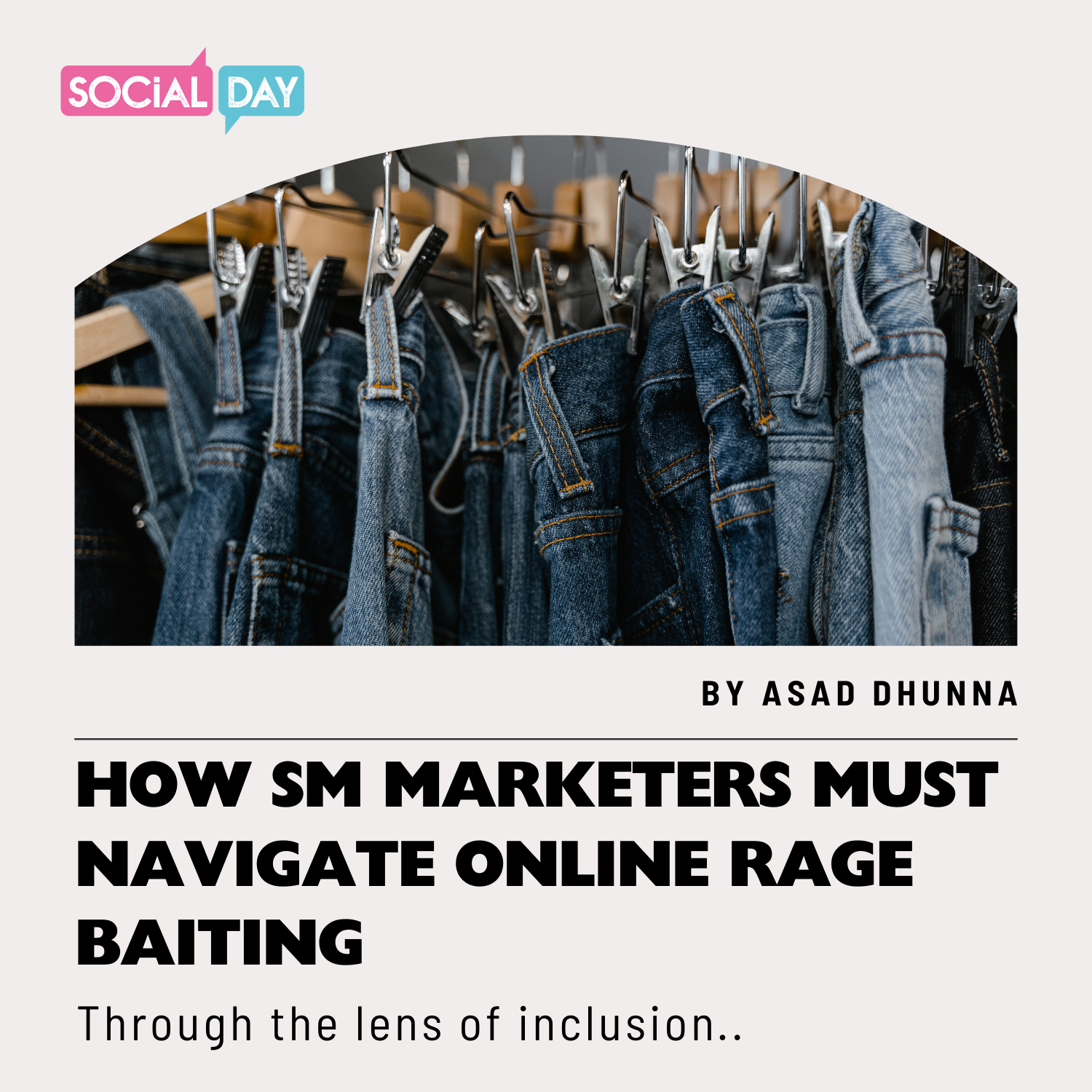The innocent Approach: An Interview With the Smoothie Brand Smashing It on Socials
With one of the most iconic brand personalities on social media, innocent has become a firm favourite among social media marketers, copywriters and business owners alike. Masters of the cheeky, candid content that has proved so popular with social media users, the brand has continued to grow its community of loyal fans.
So what’s it like to work for one of the most popular brands in social media marketing? And how do you keep one of the most iconic brand personalities alive and kicking?
In an interview with our Editor Emily Watson, innocent’s very own Social Media Manager John Thornton is telling us all about the ‘innocent approach’ and why it could just be the secret recipe to social media success.
Hey John! Thanks so much for chatting to us today. We’re huge fans of innocent here at SocialDay - I guess that’s something you must hear a lot being such an iconic brand on social media?
I mostly just hear my dad saying things like "so what is your job again?" or "why would any business pay you for that?" or "I don't understand where we went wrong with you" or "why didn't we just get a dog".
So let’s begin at the start of the process with something that many brands still struggle with on socials: honing in on an authentic brand personality. Where did innocent’s witty, humorous personality come from? And how did you decide on that unique tone of voice?
Okay so this is going to sound Very Marketing, but ever since innocent started they've been making natural drinks - so it made sense that the tone should sound pretty natural too. I was 6 at the time so I can take very little credit for that one.
We were chatting to people via letters, emails and our bananaphone long before social came around - and so when we did start on social it was a pretty natural (sorry) transition for us. I was 14 at the time so can take very little credit for that one either.
We've never wanted it to feel like a million people in marketing are trying to shove as many product messages into a tweet as they can. We just want it to feel like we've given the Twitter password to the office idiot. I do take the credit for that one.
innocent is often held up as the go-to example of a ‘relatable’ brand personality, and it feels like you were one of the first brands to do it. Was the reaction to this very human, conversational brand style always this successful from the moment you started out?
Oh you know, some people love it and some people hate it - sort of like Marmite, Brexit and Coldplay.
They did have a lot of big fans early on - people demanded we start a newsletter, or they'd request tours of the office, so now we just offer them to anyone who turns up. There’s so many dull, grey, faceless corporations out there, so reminding people that your company is full of actual humans will go a long way.
But I think what's really important is that we've always tried to back up our words with actions. It doesn’t matter how friendly or fancy you make your brand look - if your customer phones up customer service and speaks to a soulless machine, it's gonna show the whole thing's just a mask. If you ring our customer service team you'll chat to the loveliest people imaginable...or if you're unlucky, you'll get put through to me.
One of things that makes innocent’s social media so relatable is the fact that it feels like there’s a real person sitting behind the screen, posting in real-time. Is all of your content actually posted in real-time or do you still schedule your content? And if so, how much?
98% of my tweets were written and posted in the moment for two reasons: one, to give it that real person real-time feel, and two: I am terrible at planning.
Some stuff you can plan - like content for Christmas, April Fool's, Halloween, etc. and product campaigns - but the day-to-day nonsense would be dreamt up, written and posted on the overground from South Tottenham to Kensal Rise.
Plans can't change if you don't have any to begin with. One of the nice things about this approach is it means we're built to be reactive and are set up to comment on basically anything that's going on.
Most of our best nonsense doesn’t take place between work hours - it’d be evening and weekend stuff - which really helps give people the feeling it’s the social media manager going rogue. Terrible for work life balance, but great for those sweet, sweet retweets.
What many social media managers struggle with at larger brands is the sign-off process and having to go through time-consuming checks before content can go out, which often leads to a lack of reactive, trend-worthy content. How does the sign-off process work for things like reactive tweets at innocent?
The sign off process is very simple: if you’re 70% sure, go for it. The whole company uses that phrase, but what it means for social is when I’d think of something, I'd run it through a few filters in my noggin, try and check there was nothing in it that might backfire, and then I’d just release it into the wild and hope it didn’t bring the company crashing down around my ankles. Hasn't happened...yet.
It wasn’t all left on my shoulders though - if I was 69% sure about something, or worried it might get me fired, then I'd run it by my boss first. That way, if I went down, she'd go down with me. I can probably count on one hand the number of tweets she hasn't let me post. There's a couple of areas we can't or wouldn’t touch - we're not allowed to take sides in political stuff etc., but other than that it's all basically fair game.
Famous last words, but we actually have surprisingly few calamities. And hey - all the companies with huge sign off processes still have huge disasters. Stuff will go wrong whether you run it by 50 people or not, but a lot less stuff will go right if you run it by 50 people - and you’ll waste loads of time. You might as well just accept there’ll be an annual calamity. Long sign off stops more good ideas than bad ones.
I’m sure most social media managers could name a few favourite examples of innocent’s social media content, but what do you think is the best piece of content you’ve created for the brand and why?
The gigantic argument we had with the entire internet about the colour of our drink (it's blue) is the best performing thing we've ever done, so I guess I have to say that one. I am particularly proud of how we saved a conker-based disaster and turned it into a stunning success though. Oh, and when the pubs reopened I had a lot of fun giving it the full Saturday night treatment at 8:30 on a Monday morning…
And for all of the social media managers out there thinking, ‘How does he do it?!,’ can you offer three pieces of advice for how we can all create content that truly speaks to and engages their target audience?
1. No one goes on social media to look at adverts. They're going on to watch cat videos, gawp at tasty food, chat with their friends, or find out whether or not it's a bones day. So think about how you can make your stuff interesting to people. If you're a gym don't just post about your membership fees; loads of people go on social to watch workout vids, so post workout vids. If you're a bank, don't just post about interest rates - money is super confusing, so post genuinely useful advice (Monzo are great for this). Post stuff that's useful to people, don't just scream about your product.
2. Reply to everyone. If someone takes the time and effort to say something fun to a gigantic corporation...I mean that's just wild, and worth its weight in gold. I see some big companies who reply to absolutely no one, and it’s just taking your audience for granted. That blue drink argument (aka our best moment ever) would never have happened without us spending years replying to people and building up an audience who are up for a chat.
3. Calamities are opportunities. Nearly all our best moments came from something going a little bit wrong (like people disagreeing about the colour of a juice) or quite a big bit wrong (like accidentally launching a poisonous conker milk). And it's the same with other brands - Gregg's used people whinging about their vegan sausage roll to turn it into a massive moment, while Aldi turned a cake-based lawsuit into social gold.
Instead of thinking about damage limitation, think about...whatever the opposite of damage limitation is... I dunno, success maximisation? That sounds very David Brent. But you get what I mean.
4. Oh, and this is sort of related but sort of a sneaky fourth point - the post isn’t finished when you press send. All those moments I mentioned came from what happened after, from building on them, from keeping the joke going.
Finally, we couldn’t let you go without asking: What’s your all-time favourite innocent smoothie?
We have a gazpacho range in France and it is honestly sensational. Worth relocating for.
innocent gazpachos? Well, you really do learn something new every day.








